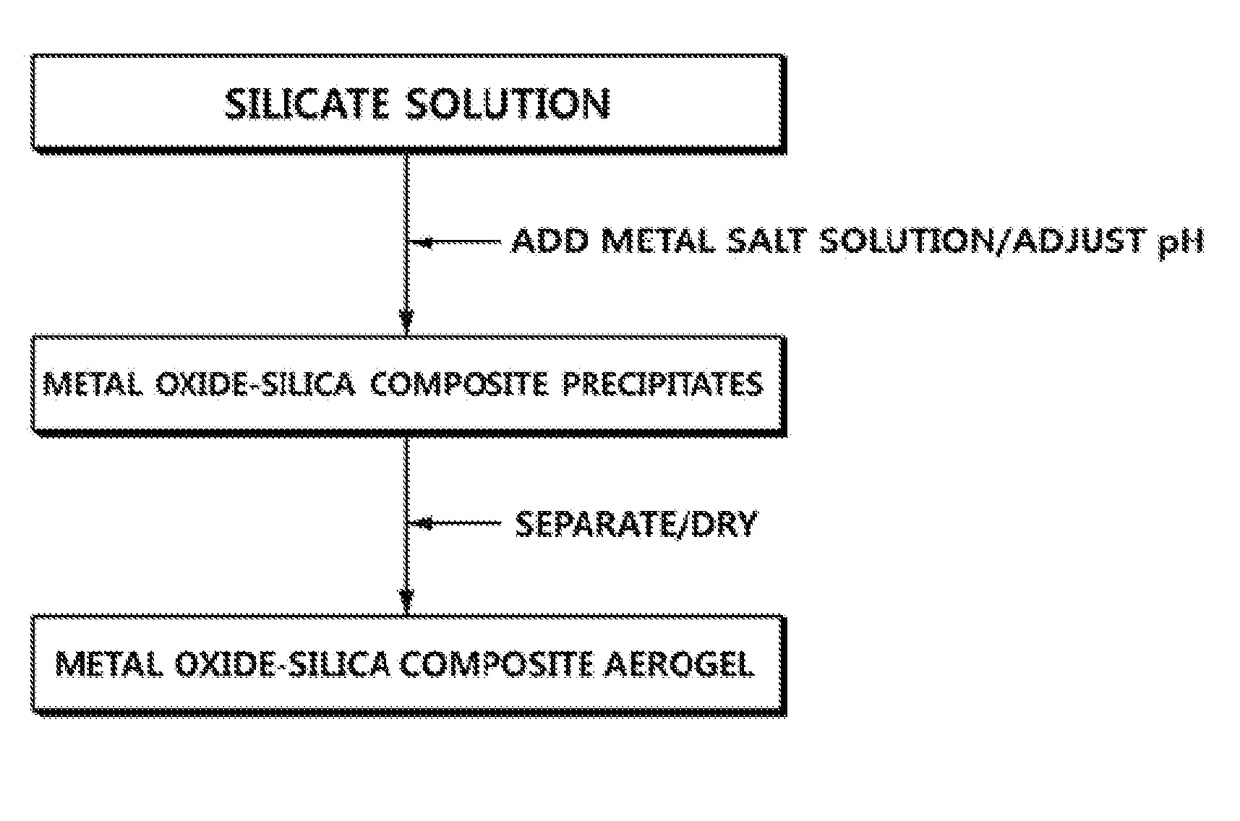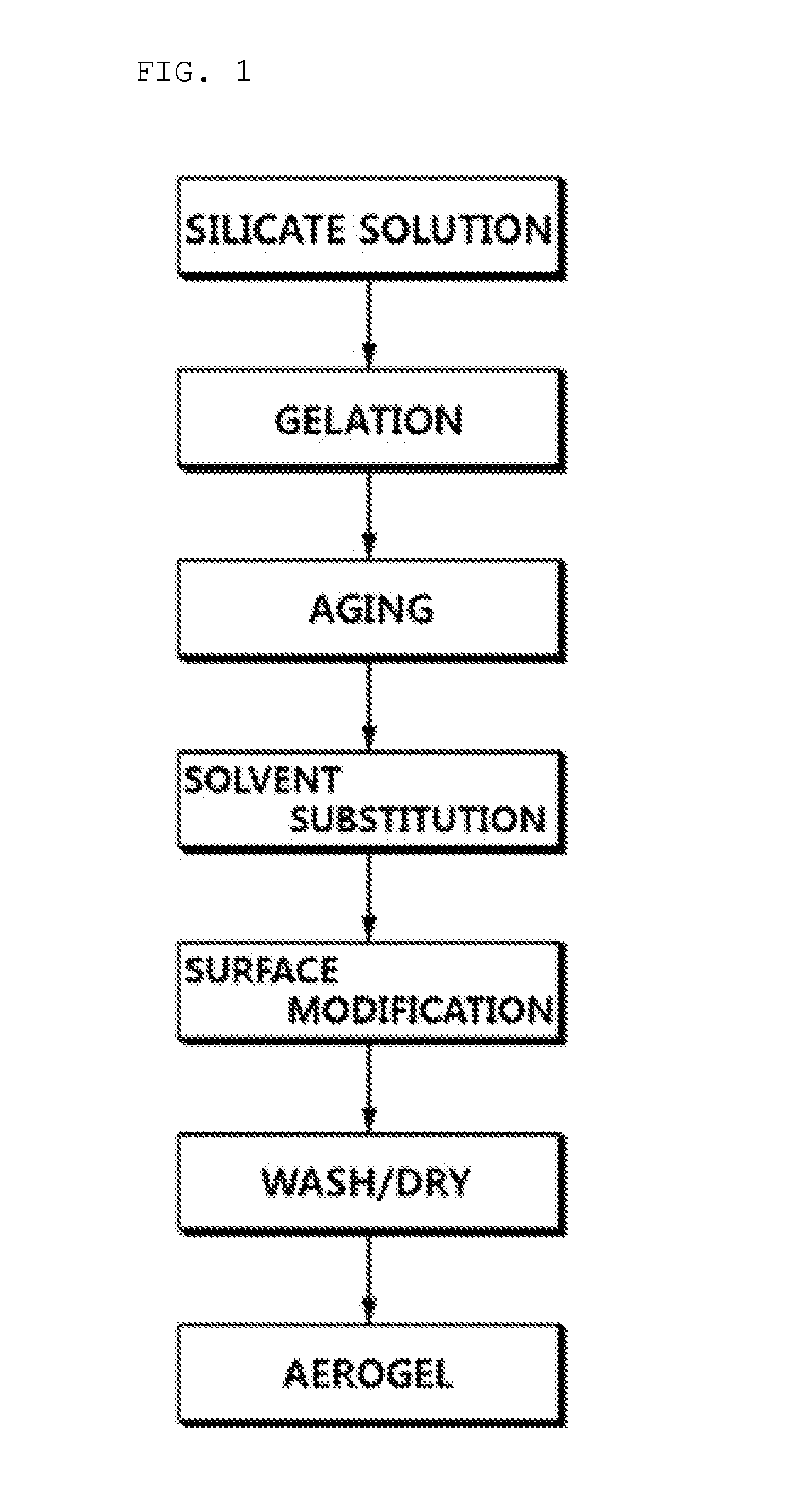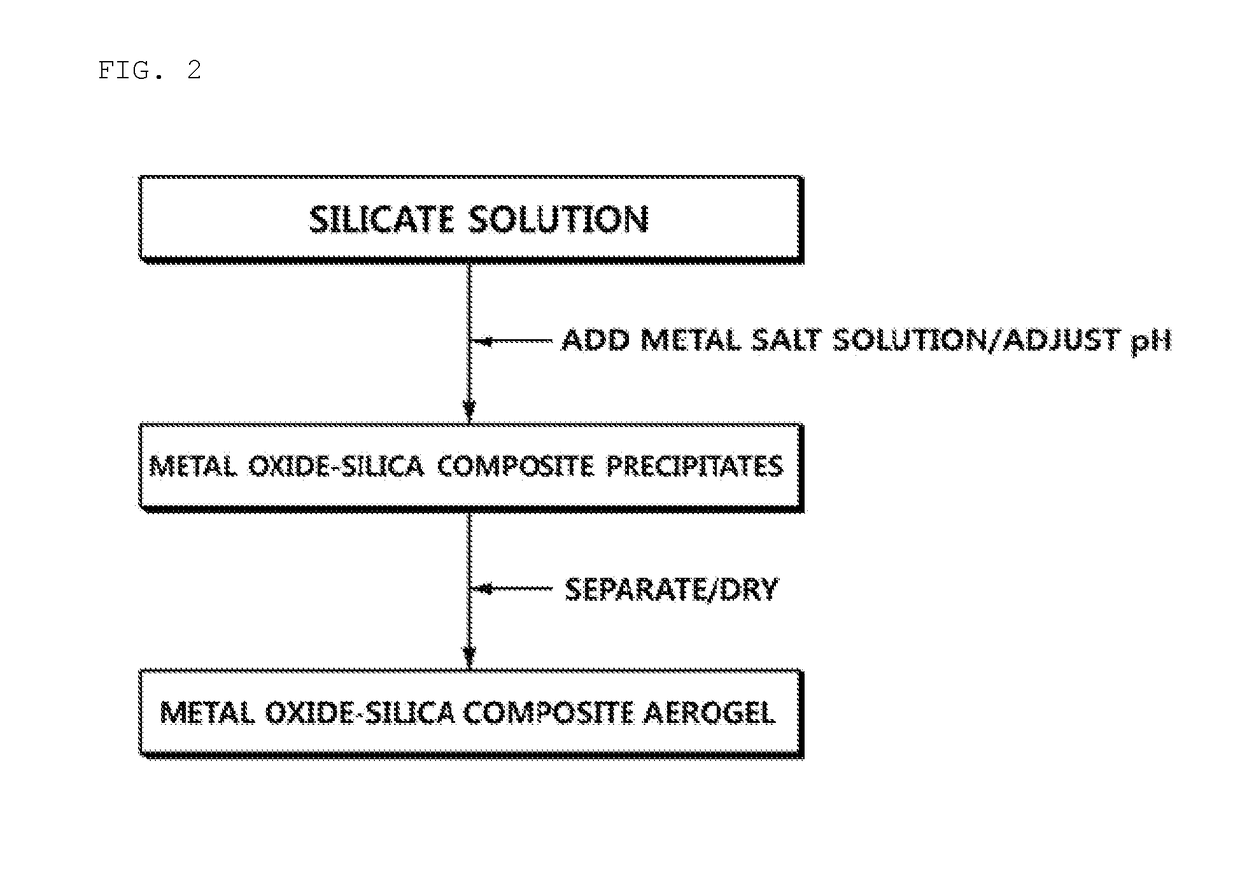Method of preparing metal oxide-silica composite aerogel and metal oxide-silica composite aerogel prepared by using the same
a technology of composite aerogel and metal oxide, which is applied in the direction of silicon compounds, calcium/strontium/barium chlorides, silicon compounds, etc., can solve the problems of difficult to impregnate the silica aerogel into the base material, the silica aerogel has limitations, and the scattering is severe, etc., to achieve excellent physical properties, low tap density, and high specific surface area
- Summary
- Abstract
- Description
- Claims
- Application Information
AI Technical Summary
Benefits of technology
Problems solved by technology
Method used
Image
Examples
example 1-1
[0073]Distilled water was added and mixed with water glass (Na2SiO3) to prepare a silicate solution. Separately, MgCl2 and CaCl2 were dissolved in distilled water to prepare a metal salt solution, and the metal salt solution was then added and mixed with the silicate solution. An HCl acid catalyst was added to the resulting mixture until a pH of the mixture became those described in the following Table 1. White precipitates were generated immediately when a reaction of the silicate solution with the metal salt solution occurred. After natural precipitation of the precipitates, a transparent solvent on an upper layer was separated and removed. The precipitates were repeatedly washed three times with deionized water and then vacuum filtered. A generated cake was disposed in an oven and then dried at a temperature of 105° C. to prepare a metal oxide-silica composite aerogel. In this case, an amount of each compound was used as described in the following Table 1.
examples 1-2 to 1-5
and Comparative Example 1-1
[0074]Metal oxide-silica composite aerogels were prepared in the same manner as in Example 1-1 except that each reactant was used in an amount as described in the following Table 1.
experimental example 1
[0075]A change in tap density of each metal oxide-silica composite aerogel according to the addition of the acid catalyst was measured and evaluated for the composite aerogels prepared in Examples 1-1 to 1-5 and Comparative Example 1-1 using a tap density tester (TAP-2S, Logan Instruments Co.).
[0076]Also, a BET specific surface area was measured by a 6-point BET method according to a nitrogen gas adsorption-flow method using a porosimetry analyzer (Belsorp-II mini by Bell Japan Inc.).
[0077]Furthermore, with respect to a pore volume, an amount of mercury intruded into pores was measured by mercury porosimetry analysis, and the pore volume was determined therefrom.
[0078]The results thereof are presented in Table 1 below.
TABLE 1Silicate Metal salt solutionsolutionSpecific MgCl2 CaCl2 Na2SiO3Mixed Tap surface Pore Thermal concentration concentration concentration liquid density area volume conductivity (M)(M)(M)pH(g / ml)(m2 / g)(cm3 / g)(mW / mK)Comparative0.440.2229.50.1751500.3130.4Example 1...
PUM
| Property | Measurement | Unit |
|---|---|---|
| temperature | aaaaa | aaaaa |
| Brunauer-Emmett-Teller (BET) specific surface area | aaaaa | aaaaa |
| tap density | aaaaa | aaaaa |
Abstract
Description
Claims
Application Information
 Login to View More
Login to View More - R&D
- Intellectual Property
- Life Sciences
- Materials
- Tech Scout
- Unparalleled Data Quality
- Higher Quality Content
- 60% Fewer Hallucinations
Browse by: Latest US Patents, China's latest patents, Technical Efficacy Thesaurus, Application Domain, Technology Topic, Popular Technical Reports.
© 2025 PatSnap. All rights reserved.Legal|Privacy policy|Modern Slavery Act Transparency Statement|Sitemap|About US| Contact US: help@patsnap.com



